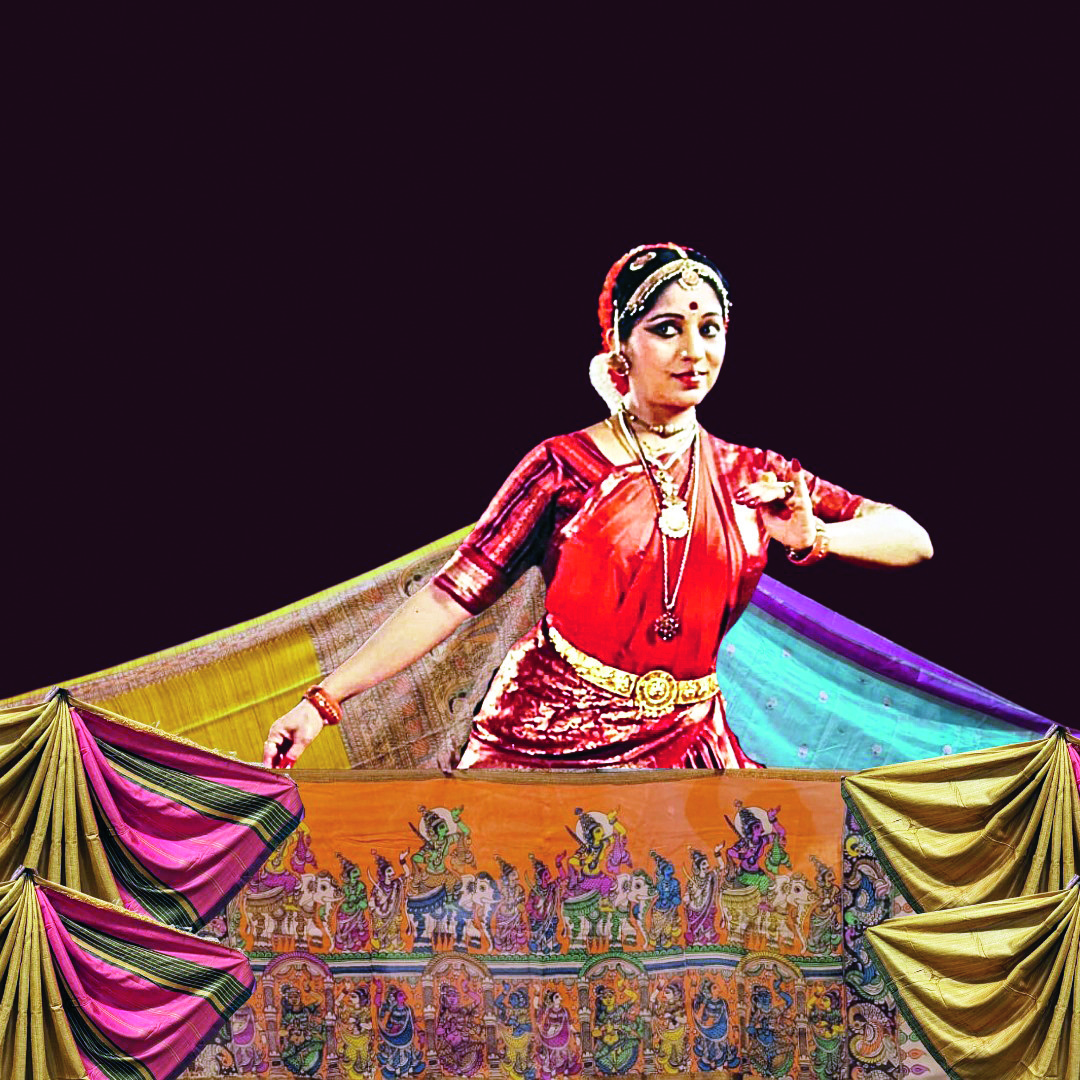Spinning yarns of intricate sari tales through dance
A group of talented artists will showcase a unique dance production focusing on the textiles and saris of India, weaving together a plethora of traditions and tales that are embedded in the six to nine-yard wonder garment…

The ‘Mix and Match’ dance production will be performed on February 10, 2024 at Kamani Auditorium, New Delhi. (Image by Arrangement)
Every sari has a unique story woven into it. And what better way to tell it than through dance forms. A multimedia dance production on textiles and saris of India, choreographed by Acharya Jaya-lakshmi Eshwar, will take place in the capital in February. The cultural extravaganza seamlessly integrates Indian classical dance and textiles, weaving together a plethora of traditions and tales. Through imaginative choreography and visual arts, it spotlights the myths and folklore unique to each region, intertwining saris and textiles from those respective regions. The production introduces original musical compositions and immersive storytelling, presenting a harmonious display that captures the kaleidoscopic beauty of India.
Socio-Cultural Fabric
As a student of Bharatanatyam at Kalakshetra, Chennai, Eshwar always admired the artistic saris worn by her mentor and guru Padma Bhushan Late Rukmini Devi Arundale. The founder president of Kalakshetra had also created a weaving centre at the institution. “I was always interested in the aesthetic looks and designs of saris,” recalls Eshwar. However, when she would go to buy a sari, she would just pick it up. “I didn’t realise there are so many varieties, weaving techniques, embroideries, intricacies, and artisan skills,” she says.
During the pandemic, her sons bought and presented her a book called Saris of India – Tradition & Beyond by Rta Kapur Chishti, as a diversion from the dreadful scenario. She read the book and admired the beautiful saris of each state with their vibrant colours, intricacies of design, and the know-how of weaving. That was how the seeds of this production were conceived. Last year, Eshwar also had the opportunity to write the concept and choreography for the Diaspora Festival in Indore, titled Progressive India (Pragatisheel Bharat), which was organised by the Indian Council for Cultural Relations. There, she did a small piece on textiles with the Maheshwari silk saris as part of the concept.
It took a year to visualise and write the concept and thought process of the production in terms of choreography, lyrics, language and musical score. When she began working on it, for the first time in her life, she started thinking about the weavers of the saris, who put in so much effort. Since she was not just covering the saris of Indian states through visuals but also trying to use them through dance movements, Eshwar did not realise how challenging the task at hand was. As if talking about the journey of saris in the form of dance was not difficult enough, condensing an entire production about all the saris of India – from the north to the south, east and west — into a few minutes, was not easy. “Challenges aside, for me, the production is a tribute to these weavers,” she says.
Wo(men) At Work
Wo(men) At Work
The production, which has Eshwar dancing along with 10 of her senior disciples and three Chhau dancers, is divided into four segments. In the prelude to each segment, important history/mythology and facts are depicted through dance and a voice-over about the saris. This is accompanied by visuals followed by a particular region, its varieties of saris, weaving techniques, motifs and fabrics used. The dancers wear the actual saris worn in a particular region while performing. The language for dance is also used in particular states as well as their culture. Further, lyrics are taken from well-known poets and musicologists belonging to different periods. For instance, when talking about Benarasi saris, there is a short episode from Manisha Panchakam of Adi Shankara, where he meets Lord Shiva in disguise before Adi Shankara became an Advaita philosopher.
The musical score has been put together by different composers. The first and third segments are by Gopal Rao Parnandi from Chennai. The second is by Vetri Boopathy and Arvind Narayanan from Delhi, and the final segment is by Sanjeev Venkataramanan from Chennai. Needless to say, since so many regions are being represented, the musical score is a bit unusual. “While I wanted it to be traditional, I also wanted it to have modern interpretations, so that different walks of life can enjoy the production,” she says. The show also uses multimedia visuals by Avinash Kumar from Unbox Cultural Futures.
( Source : Deccan Chronicle )
Next Story

